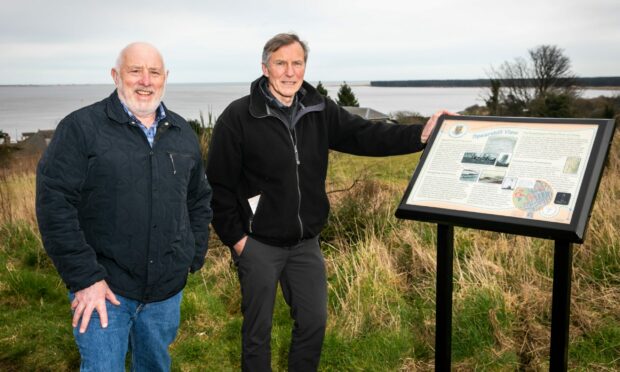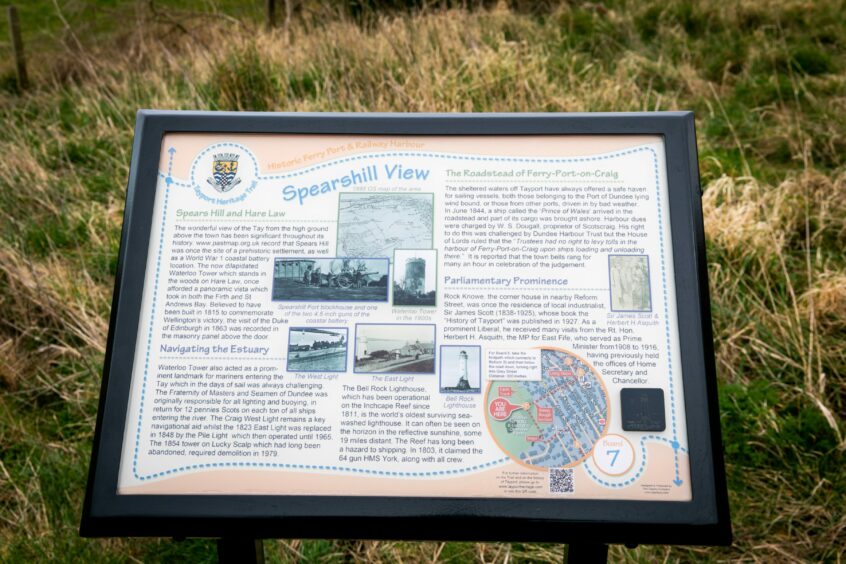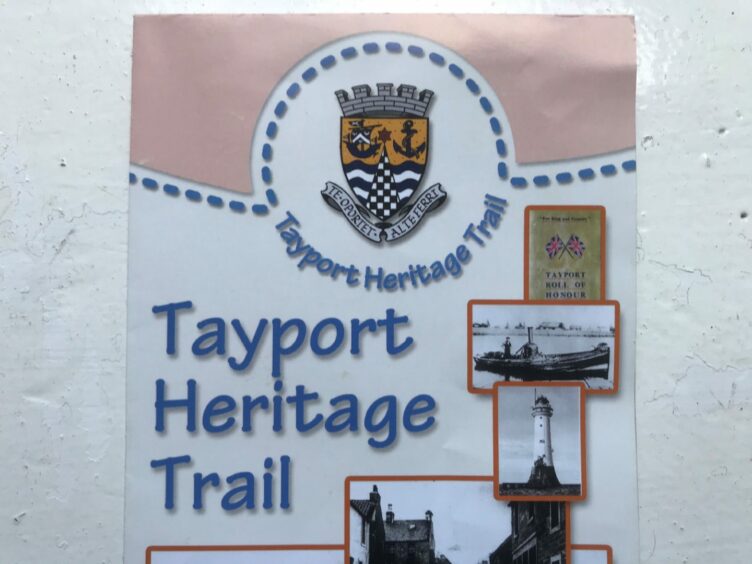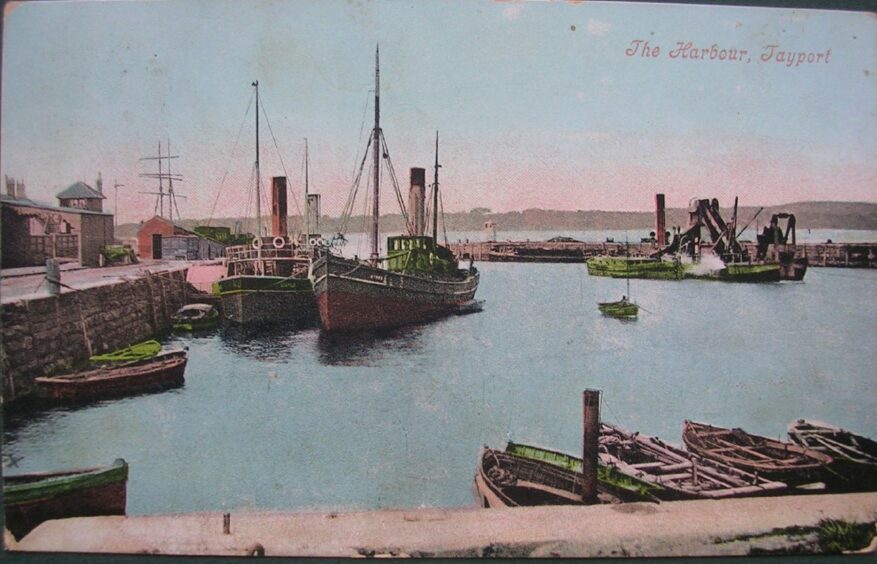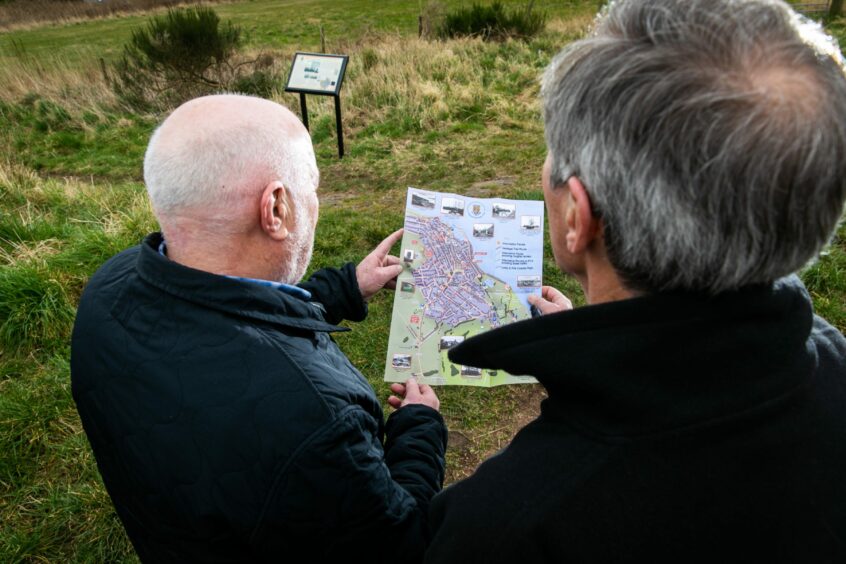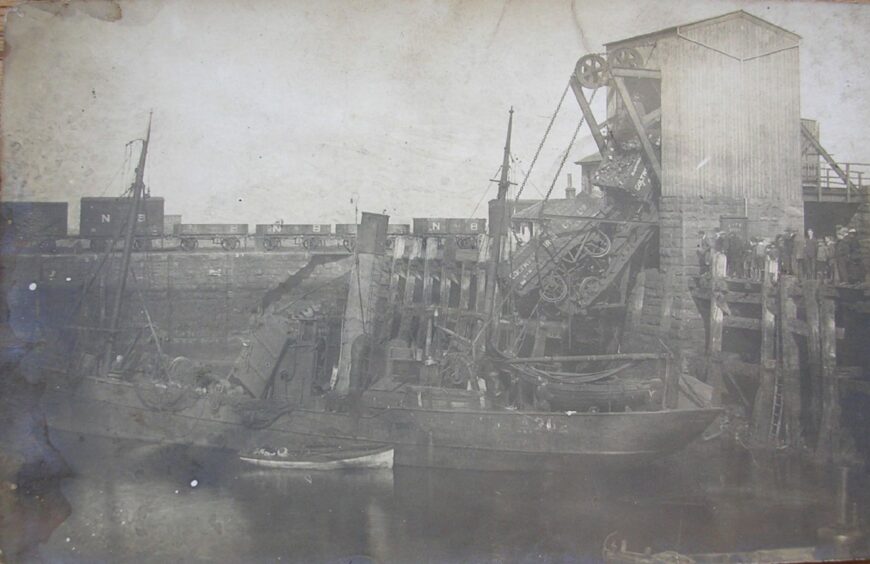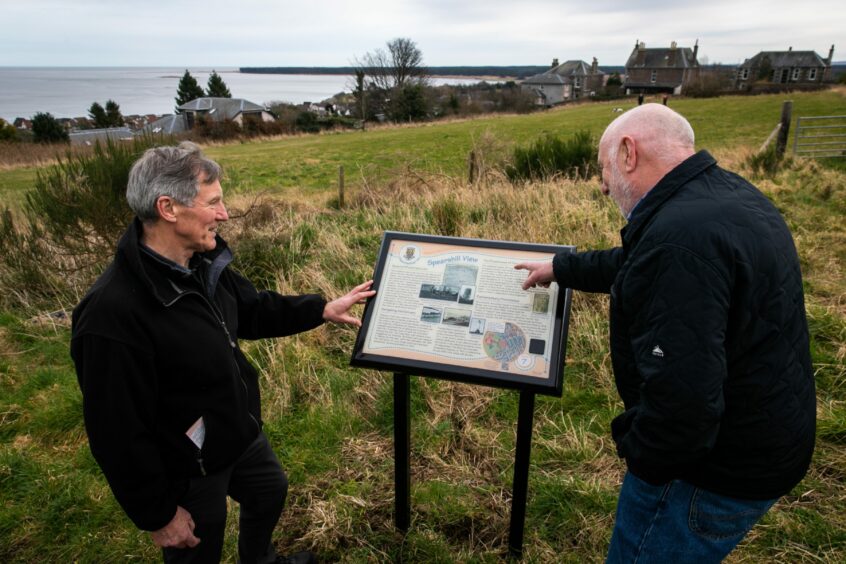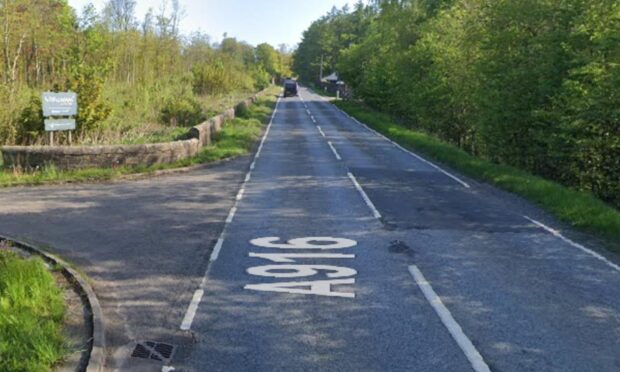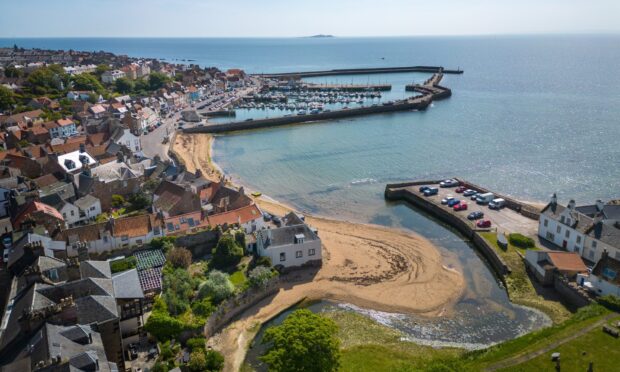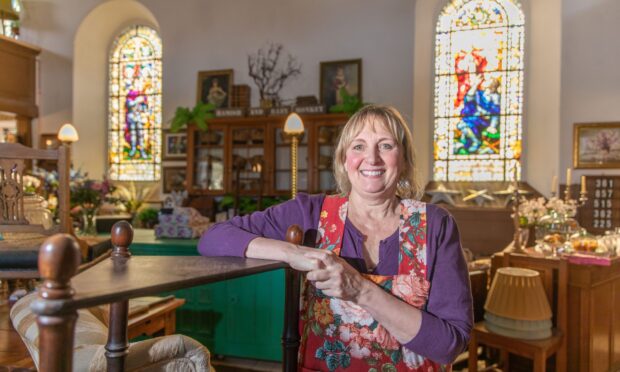The high ground at Spearshill behind Tayport is a fine vantage point to admire the vista looking over the town and the Firth of Tay.
But thanks to a notice board erected as part of the new Tayport Heritage Trail, it’s also the perfect place to find out more about the strategic importance of Tayport – previously known as Ferry-Port-on-Craig – over the millennia.
Here, a panel gives fascinating insight into the light houses which helped mariners navigate the Tay, while views across to the Bell Rock Lighthouse are a reminder of the hazards further out to sea.
The board also tells of prehistoric settlement in the area whilst a First World War coastal battery defence station was recorded at nearby Spearshill Fort.
Elsewhere, notice boards give detailed information on everything from the ferry, harbour and railway which most shaped the history of the town to by-gone local industry, imprisoned Covenanters and the Lairds of Scotscraig Estate.
Labour of love
The Courier caught up with Ferry-Port-on-Craig Commonty Fund chairman Ian Mathers and trustee Abby Oswald to hear more about the Tayport Heritage Trail which has been established by the commonty fund for the community.
The four mile (6.5km) trail provides an introduction to the heritage of both town and parish, along with the surrounding countryside.
Ian explained how the commonty fund had spent the last five years raising finance and developing the heritage project on behalf of the town.
Supported by the community council along with Fife Council and Taybridgehead councillors, they installed 24 heritage boards in mid-November and gave it a soft launch via the local headmistress.
Schoolchildren took home a trail leaflet and rubbing sheet to discuss with their families.
The commonty fund formally transferred the asset to the community council in mid-November to ensure their insurance coverage would apply.
Meanwhile, efforts are continuing to establish a Heritage Centre in Tayport Burgh Chambers, which houses the library.
Now, to coincide with the formal launch of the Tayport Heritage Trail website, and to encourage local residents – and visitors – to explore the trail, Messrs Mathers and Oswald explained how they hoped it reflected their desire to highlight both the story and sense of community that has been forged by their forebearers over the centuries.
They also hoped it would inspire a new generation of residents in Tayport to “pick up the baton” and take an interest in the town’s rich past.
Distinctive story of Tayport
“Essentially when you visit other towns you often come across heritage panels which give a bit of information about the town,” says Ian when asked where the idea for the trail came from.
“But Tayport was unrepresented in that regard.
“We feel that Tayport has quite a unique distinctive story worth telling.
“Essentially we view it as a unique North East Fife part of the Kingdom of Fife. We feel it’s had an impact on its history throughout and still does.
“Essentially this heritage trail tells and gives an interpretation of this story.”
Tayport’s North Fife coastal location continues to define both the identity and sense of community of the area.
Its geography and landscape have encouraged both habitation and travellers from the earliest times.
There were Mesolithic settlements of hunter-gatherers and fishermen on small tidal islands close to Morton Farm from around 6000 BC.
To the west, the more elevated part of the parish around Scotscraig Estate extends down to the rocky shoreline which provided access for the early ferry crossings that gave rise to the village’s original name of Ferry-Port-on-Craig.
Influence of the railway
The trail has been branded with the ‘Historic Ferry Port & Railway Harbour’ stamp.
This reflects the significant influence of the Edinburgh, Perth & Dundee Railway on the affairs of the village, which followed the establishment of the Railway Harbour and Ferry service in 1848, which predated the building of the Tay Bridge.
Geographically they identified a four mile route around the town where the locations of boards represent a story that reflects that area.
But this doesn’t mean people have to follow the whole trail in one go – although they could! Each board stands on its own merits and gives a flavour of that area’s significance.
“Really what we are looking to do is develop a greater awareness in the town of its story,” adds Ian.
“We hope the younger generation will grow up with an awareness of it and hopefully an interest.”
Abby, who, like Ian, grew up in Tayport and has strong family roots in the town going back generations, said access to old press cuttings had enabled them to put a lot of “colour” on the historical information.
Many people know about things like the ferry which once ran to Broughty Ferry.
The opening of the Tay Road Bridge in 1966 also changed the dynamic of Tayport – giving greater two-way access to Dundee while remaining part of Fife.
But other information was less well known.
“Things people aren’t too familiar with include the fact it was a very important railhead before the Tay Bridge was built,” says Abby.
“There’s very little evidence of a railway now. But it was the end of the line if you like.
“It was extremely important in its day.
“Also the fact ships would be built here. The cemetery out the road and in the church has graves for scores of ships masters and ship owners which just illustrates the fact that Tayport was a very important place.
“We even found an advert for a ship travelling from Tayport to Melbourne Bay, offering room for two passengers costing £21 each. Imagine that?”
Unexpected discoveries
Another unexpected turn-up also came when Abby found two adverts from London newspapers giving the results of the Ferryport-on-Craig Races, confirming there was once a horse racing circuit on the golf course.
One intimation for a race warned ‘Dogs will be killed’.
Another article detailed sale of the inn in 1725 or 26. As a stopping off point for people using the ferry, it included accommodation for up to 36 horses.
At a company meeting in Edinburgh in 1851, the Edinburgh, Perth & Dundee Railway agreed to substitute “for the rather cumborous designation of Ferry-Port-on-Craig, the more intelligible one of Tayport”.
Tayport was established as a police burgh in 1887, whilst the parish remained as Ferry-Port-on-Craig until 1994.
“It’s been a real learning experience,” adds Abby.
“I think we all knew about the ferry and such like.
“But the history since the start of the 20th century. I would say we didn’t know a lot, especially about the industry.
“When we were brought up there were so many factories and foundries. It’s quite amazing. If you come and stay in the town now there are a couple of factories – Foodmek, Scott & Fyfe – but that’s about that. Donaldsons sawmill was a major employer in the town.”
Complex history
Ian said a particular area he’d learned a lot about was the “turmoil” of the 1500s and 1600s.
“It was the time of the Covenanters and it was really complex,” he says.
“There were two major players here. Scotscraig Estate was involved. One of them was murdered – Archbishop Sharp – eventually. Before that there was Sir Arthur Erskine in 1646. He originally fought with Cromwell then was killed at the Battle of Worcester.
“So the history of Scotland touched here. We’re not unique. But in other words it gives you an appreciation of the continuity.
“Then of course the Mesolithic people were at Morton Farm.
“We can now relate to that because we go to Tenstsmuir beach and it’s getting further out and further out yet in the Mesolithic period they lived on an island.
“It’s been a real awakening for us in a sense, and that’s what we are hoping getting the school involved.
“That we can get younger people to grow up with this and track future changes – which will occur!”
Research
After years of research, made all the more challenging by the Covid-9 lockdowns, and corroborating content where possible, Ian said it was predominately him and Abby who decided upon the text for the information boards.
Peter Blood of Osprey then came up with the design and layout for the boards. There was a “lot of back and forward with him”, says Ian.
What was important from the start, says Ian, was to stamp the trail with the railway harbour brand as they needed something to “lock into”.
“If you drive around the East Neuk you see signs for ancient harbours,” he says.
“But the waterfront here is in a unique position. That branding is helpful.”
“The opening of the Larick Centre has also helped attract more people to the area,” adds Abby.
“During the pandemic they discovered the walks, they’ve discovered the Larick, the campsite, the heritage trail, the walk to the bridge – it’s as if the stars have aligned!”
How to find out more
Leaflets for the Tayport Heritage Trail can be found at local libraries and tourist information centres.
More information, with downloadable resources, can also be found at www.tayportheritage.com
